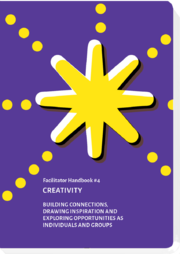Goals
- Familiarizing oneself with different perspectives on the same issue
- Gaining patience and developing our self-understanding
- Achieving a larger and more complex picture of the issue.
Steps
1. Ask the participant to identify three people in his/her life that have a positive and supportive attitude towards them (person A, B, and C).
2. Ask the participant to change their perspective and think as person A would.
- What advice person A would give you about the decision in general?
- What would person A’s arguments be?
3. While the participant answers the questions as person A, the facilitator writes down the answers (it is best to use colored cards, yellow cards for question 2.1, green cards for question 2.2) After the participant has finished, ask about the advice and arguments person B and person C would give, again making notes on colored cards.
Reflection
After exploring all the advice and arguments, take a closer look at the colored cards, putting them on a pin board if you have one. Divide the cards into two categories, putting the advice in one column and the arguments in a second. If there are subgroups of arguments and advice, it may be helpful to cluster them in groups. Now take a closer look at them.
Useful questions to ask the involved participant may include:
- How do you see the decision making process now?
- What do you think about the advice? How can these individuals' opinions help you?
- What do you think about the arguments? Which of them make sense to you? Which are helpful?
- What new insights did you gain?
- When asking these questions it is extremely important to remain non-judgmental and impartial.
Reference
Inspired by: Sabine Prohaska: Coaching in der Praxis, 2013
Experiences
Usually this exercise helps us to establish a kinder attitude towards ourselves. People can often be quite impatient and hard on themselves when making decisions. They may grow angry with themselves if they are not able to make a decision, or fiercely defend their position. This exercise helps them to be kinder and more patient, both with themselves and the other participants. Others' arguments can help a participant to obtain a clearer picture.
Throughout this process, it is important that the person engaged in the decision-making process is the one who decides which of the arguments they want to use to make their decision.




